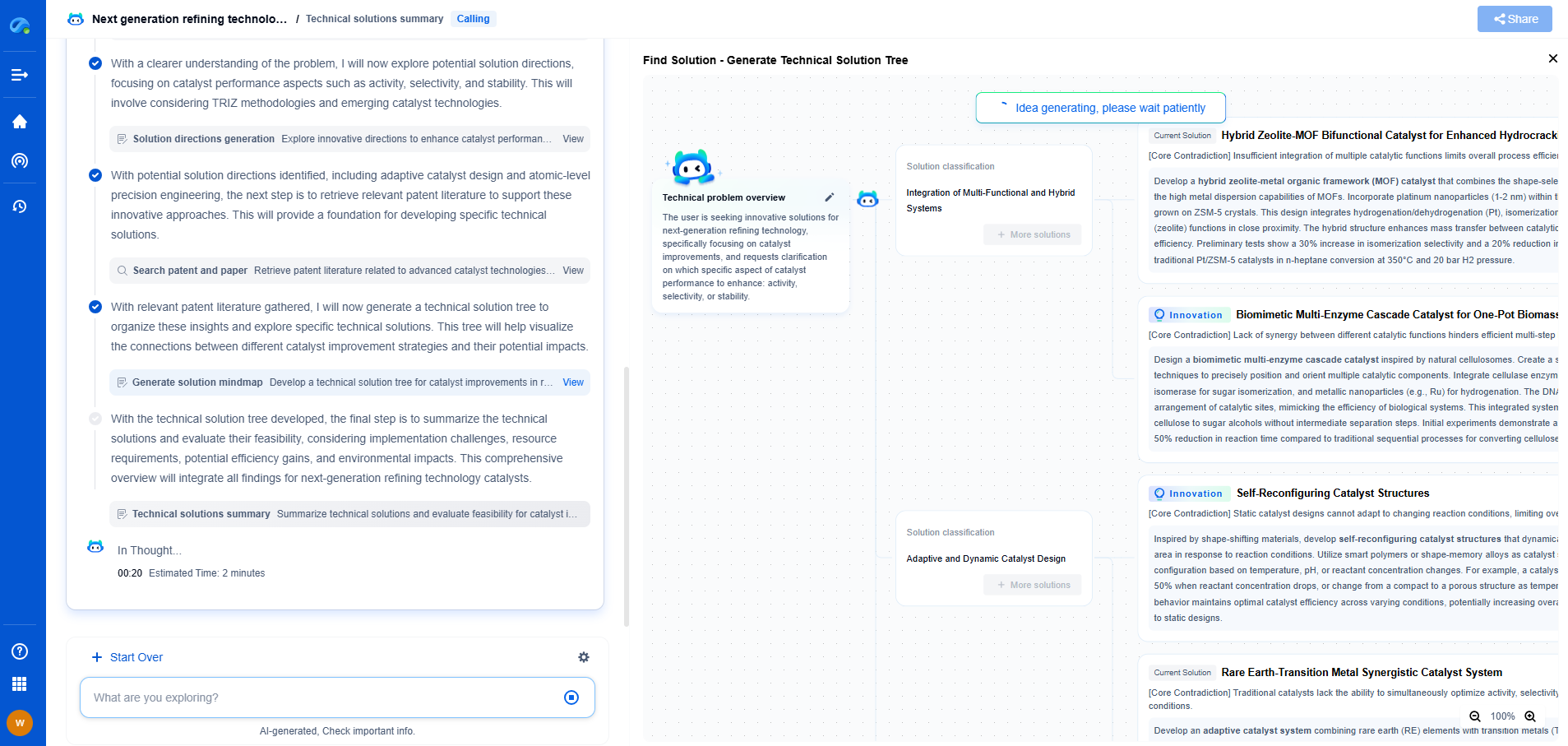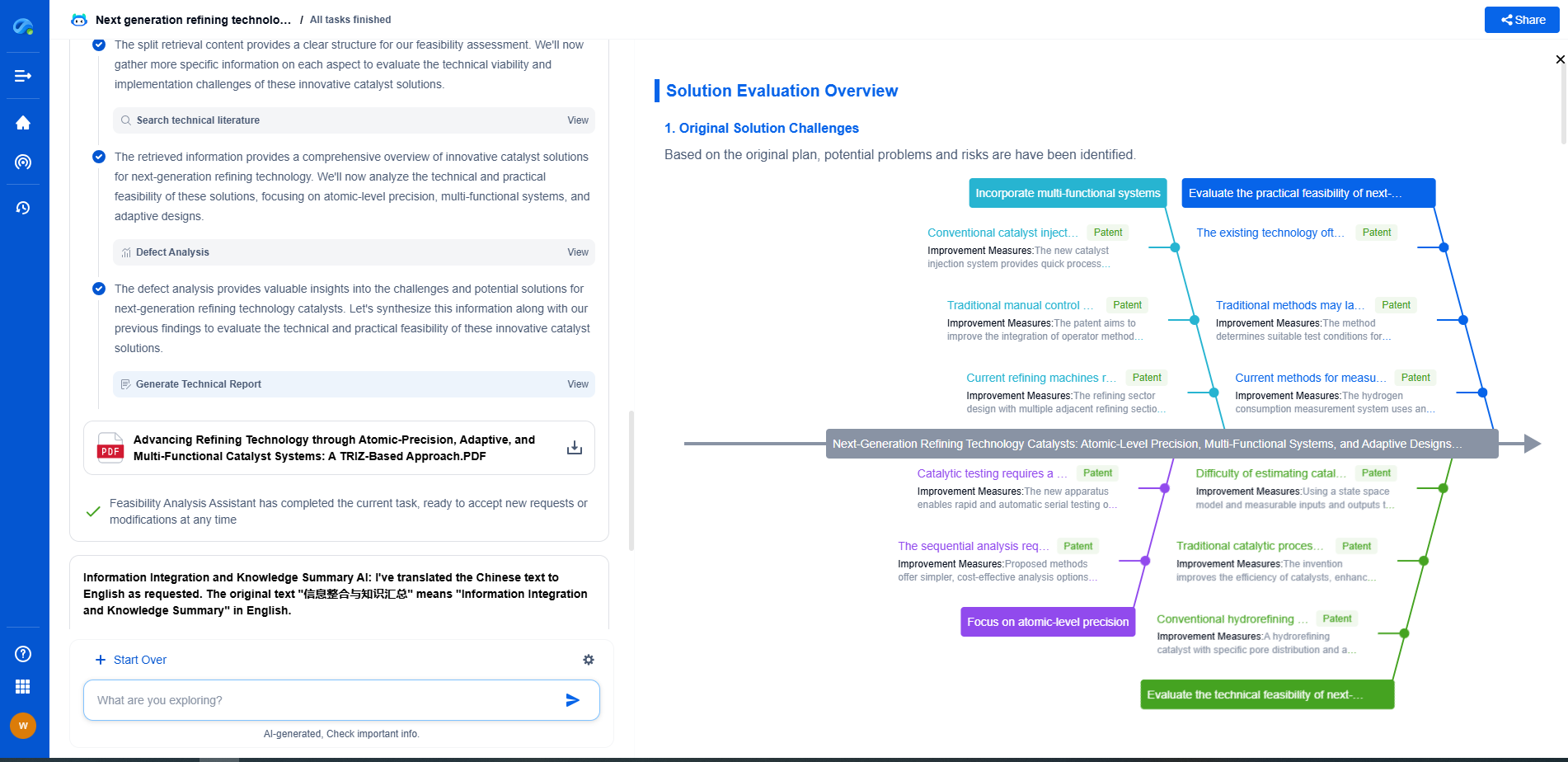Overcoming NB-IoT Latency for Critical IoT Applications
JUL 14, 2025 |
Narrowband Internet of Things (NB-IoT) is a cellular technology that has gained significant traction for its ability to connect devices that require long battery life and operate in challenging coverage areas. While its low power consumption and wide reach make it an excellent choice for many IoT applications, its latency issues pose challenges for critical applications that demand real-time communication. Understanding and overcoming these latency hurdles is crucial for leveraging NB-IoT in scenarios where timing is everything.
Understanding Latency in NB-IoT
Latency refers to the time delay in transmitting data from one point to another in a network. In NB-IoT, latency can be influenced by various factors including network congestion, signal strength, and the distance between the device and the base station. For non-critical IoT applications like smart metering or environmental monitoring, a delay of a few seconds may not be significant. However, for critical applications like healthcare monitoring, industrial automation, or emergency services, latency becomes a critical parameter that requires stringent management.
The Impact of Latency on Critical IoT Applications
The ramifications of latency in critical IoT applications can be profound. In healthcare, for instance, a delay in transmitting data from wearable sensors to a healthcare provider could have life-threatening consequences. Similarly, in industrial settings, delays in data transmission could lead to equipment malfunctions or safety hazards. Hence, minimizing latency is not just a technical challenge but a necessity for ensuring the reliability and effectiveness of critical IoT applications.
Strategies for Reducing NB-IoT Latency
1. Network Optimization
Optimizing the network can significantly reduce latency. This involves ensuring optimal network configurations, reducing congestion, and enhancing the signal quality. Implementing advanced algorithms to prioritize data packets in critical applications can also help in reducing delays.
2. Edge Computing
By processing data closer to where it is generated, edge computing can substantially reduce latency. Deploying edge computing resources allows for immediate data processing and decision-making, which is crucial for applications that require real-time responses.
3. Enhanced Carrier Aggregation
Carrier aggregation, which involves combining multiple frequency bands to increase bandwidth, can help in reducing latency. This technique can be particularly beneficial in urban areas with high device density, where network demand can cause delays.
4. Adaptive Scheduling
Adaptive scheduling involves dynamically adjusting the scheduling of data transmissions based on network conditions. This can ensure that critical data is prioritized and transmitted with minimal delay, thus reducing latency for important applications.
5. Leveraging AI and Machine Learning
Incorporating AI and machine learning can predict and manage network congestion by analyzing patterns and optimizing data flow. These technologies can help in making real-time adjustments to maintain low latency levels.
Future Directions and Innovations
The ongoing evolution in NB-IoT technology promises further reductions in latency. Innovations such as 5G integration are expected to drastically improve data transmission speeds and reduce delays in critical applications. Additionally, advancements in network infrastructure, such as the deployment of more base stations and improvements in signal processing, will further aid in minimizing latency.
Conclusion
Overcoming NB-IoT latency is pivotal for the successful implementation of critical IoT applications. By combining strategies such as network optimization, edge computing, and leveraging advanced technologies like AI, it is possible to achieve the low latency required for real-time data transmission. As NB-IoT continues to evolve, staying ahead of latency challenges will ensure that we can fully harness the potential of IoT in critical fields, ultimately enhancing safety, efficiency, and reliability.
From 5G NR to SDN and quantum-safe encryption, the digital communication landscape is evolving faster than ever. For R&D teams and IP professionals, tracking protocol shifts, understanding standards like 3GPP and IEEE 802, and monitoring the global patent race are now mission-critical.
Patsnap Eureka, our intelligent AI assistant built for R&D professionals in high-tech sectors, empowers you with real-time expert-level analysis, technology roadmap exploration, and strategic mapping of core patents—all within a seamless, user-friendly interface.
📡 Experience Patsnap Eureka today and unlock next-gen insights into digital communication infrastructure, before your competitors do.
- R&D
- Intellectual Property
- Life Sciences
- Materials
- Tech Scout
- Unparalleled Data Quality
- Higher Quality Content
- 60% Fewer Hallucinations
Browse by: Latest US Patents, China's latest patents, Technical Efficacy Thesaurus, Application Domain, Technology Topic, Popular Technical Reports.
© 2025 PatSnap. All rights reserved.Legal|Privacy policy|Modern Slavery Act Transparency Statement|Sitemap|About US| Contact US: help@patsnap.com

